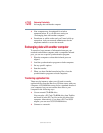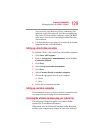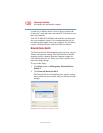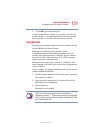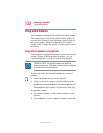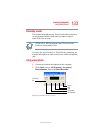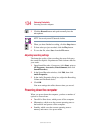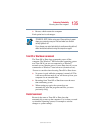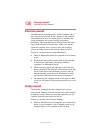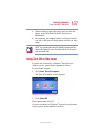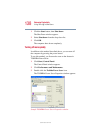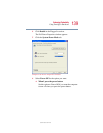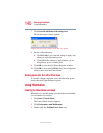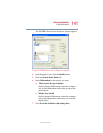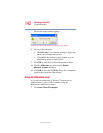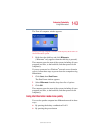
136
Enhancing Productivity
Powering down the computer
5.375 x 8.375 ver 2.4.0
Hibernation command
The Hibernation command powers off the computer, but it
first saves the current state of the computer to the hard disk.
Since Hibernation does not require power to maintain the
saved information, the system settings are retained
indefinitely. Restoring information from the hard disk takes
longer than restoring it from memory. When you start up
again, the computer runs a self-test, loads the operating
system, and then returns to the state in which you left it.
Factors to consider when choosing Hibernation:
❖ While in Hibernation mode, the computer uses no battery
power.
❖ Because the state of the system is held on the hard disk,
no data is lost if the battery discharges while the
computer is in Hibernation mode.
❖ When starting up again, this choice uses less time and
battery power than the Turn Off or Shut down option. But
it uses a little more time and battery power to start up
than the Standby option, because information is being
retrieved from the hard disk instead of from memory.
❖ On restarting, the computer returns to the state in which
you left it, and opens all the programs and files you were
using.
Standby command
The Standby command puts the computer into a power-
saving mode. Standby stores the current state of the computer
in memory so that, when you restart the computer, you can
continue working from where you left off.
Factors to consider when choosing Standby:
❖ While in Standby mode, the computer uses some battery
power. If your computer is left in Standby mode for an
extended period, your computer could lose data.



